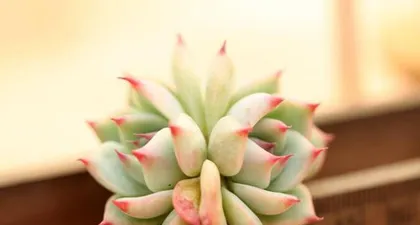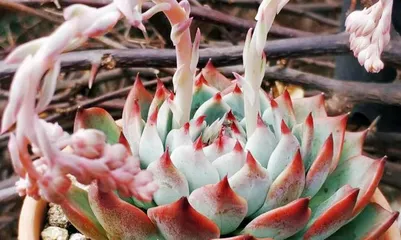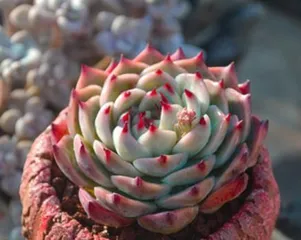G Haworthia is a popular type of succulent plant, known for its exquisite appearance and high ornamental value. However, to cultivate a beautiful G Haworthia, it requires not only proper care methods but also skillful pruning. This article will guide you on how to care for your G Haworthia to make it look stunning.

Watering Management
G Haworthia plants prefer a dry environment, so watering should be infrequent but thorough. After each watering, the soil should be allowed to drain completely to prevent root rot from over-saturation.
Suitable Temperature
G Haworthia thrives in environments above 15°C. In the summer, avoid direct sunlight and high temperatures to prevent leaf scorch. In the winter, maintain a temperature above 5°C but not exceeding 15°C to avoid cold damage.

Sunlight Exposure
G Haworthia loves light but cannot tolerate direct scorching. In spring and autumn, you can increase the exposure time to sunlight, while in summer, prevent high-temperature sun exposure from harming the plant.
Fertilization
During the growing season, G Haworthia needs sufficient nutrients. Therefore, apply an appropriate amount of organic or specialized succulent fertilizer monthly to meet the plant's needs. Be careful not to over-fertilize.
Soil Selection
G Haworthia is quite cold-tolerant but has high requirements for soil. It is generally recommended to use well-draining sandy soil or specialized succulent soil for cultivation to avoid waterlogging and root rot.

Pruning Techniques
Pruning G Haworthia not only beautifies its shape but also stimulates new growth. Use clean scissors to trim withered or damaged leaves and stems. You can also perform shape pruning according to your own preferences.
Removing Offsets
G Haworthia produces offsets easily. If not dealt with in time, it will affect the overall shape of the plant. During the growing period, offsets should be removed promptly to make the G Haworthia more refined.
Handling Dead Leaves
The leaves of G Haworthia can easily dry out and fall off. If you find withered, yellow, or shriveled leaves on the plant, remove them promptly to prevent them from affecting other healthy leaves.
Drying Treatment
G Haworthia roots easily with adequate water and soil. Therefore, you can air-dry the cuttings (stems and leaves) for a period before planting them to allow new roots to grow.
Regular Cleaning
G Haworthia needs regular cleaning of its leaves and stems to prevent dust or pathogens from accumulating. You can gently wipe the leaves and stems with water or a damp cloth to keep the G Haworthia healthy.
Environmental Management
During its growth, G Haworthia needs to be protected from drafts and dry air. You can spread moist sand or pebbles around the plant to maintain humidity.
Pest and Disease Control
G Haworthia is susceptible to pests like aphids and whiteflies. Therefore, it is important to regularly spray insecticides and fungicides to prevent infestations and diseases.
Keeping Potting Soil Loose
The roots of G Haworthia are relatively shallow, so using a pot that is too large can easily lead to root suffocation. At the same time, the potting soil should remain loose to facilitate the plant's growth.
Controlling Growth Rate
G Haworthia grows relatively fast, so its size and shape need to be controlled in a timely manner to avoid affecting its appearance. This can be managed through methods like pruning and removing offsets.
G Haworthia is a plant with an exquisite shape and high ornamental value. In daily care, attention must be paid to watering management, suitable temperature, sunlight exposure, and fertilization. At the same time, it is also important to focus on pruning, removing offsets, cleaning leaves, and controlling pests and diseases to create a delicate and beautiful shape for the plant.